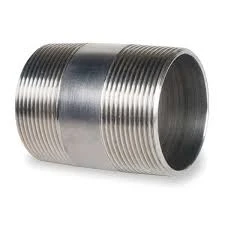-
Cangzhou Yulong Steel Co., Ltd.
-
Phone:
+86 13303177267 -
Email:
admin@ylsteelfittings.com
- English
- Arabic
- Italian
- Spanish
- Portuguese
- German
- kazakh
- Persian
- Greek
- French
- Russian
- Polish
- Thai
- Indonesian
- Vietnamese
- Zulu
- Korean
- Uzbek
- Hindi
- Serbian
- Malay
- Ukrainian
- Gujarati
- Haitian Creole
- hausa
- hawaiian
- Hebrew
- Miao
- Hungarian
- Icelandic
- igbo
- irish
- Japanese
- Javanese
- Kannada
- Khmer
- Rwandese
- Afrikaans
- Albanian
- Amharic
- Armenian
- Azerbaijani
- Basque
- Belarusian
- Bengali
- Bosnian
- Bulgarian
- Catalan
- Cebuano
- China
- China (Taiwan)
- Corsican
- Croatian
- Czech
- Danish
- Esperanto
- Estonian
- Finnish
- Frisian
- Galician
- Georgian
- Kurdish
- Kyrgyz
- Lao
- Latin
- Latvian
- Lithuanian
- Luxembourgish
- Macedonian
- Malgashi
- Malayalam
- Maltese
- Maori
- Marathi
- Mongolian
- Myanmar
- Nepali
- Norwegian
- Norwegian
- Occitan
- Pashto
- Dutch
- Punjabi
- Romanian
- Samoan
- Scottish Gaelic
- Sesotho
- Shona
- Sindhi
- Sinhala
- Slovak
- Slovenian
- Somali
- Sundanese
- Swahili
- Swedish
- Tagalog
- Tajik
- Tamil
- Tatar
- Telugu
- Turkish
- Turkmen
- Urdu
- Uighur
- Welsh
- Bantu
- Yiddish
- Yoruba

Nov . 08, 2024 18:55 Back to list
cost of galvanized pipe
Understanding the Cost of Galvanized Pipe An In-Depth Look
When it comes to plumbing and construction, the materials chosen play a crucial role in both the cost and durability of any project. Among various options available, galvanized pipes have emerged as a popular choice, particularly for plumbing, water supply lines, and even structural applications. In this article, we will explore the factors influencing the cost of galvanized pipes and their advantages, disadvantages, and other related aspects.
What Are Galvanized Pipes?
Galvanized pipes are made of steel or iron coated with a layer of zinc through a process known as galvanization. This protective zinc coating helps prevent rust and corrosion, extending the lifespan of the pipes, especially in outdoor or damp environments. Galvanized pipes have been widely used for over a century, primarily in water supply systems, as they provide good strength, are relatively lightweight, and are less prone to leakage.
Factors Influencing the Cost of Galvanized Pipe
Several factors contribute to the overall cost of galvanized pipes
1. Material Prices The base material costs (iron or steel) fluctuate based on market demand, production rates, and environmental regulations. An increase in raw material prices will directly affect the price of galvanized pipes.
2. Diameter and Length The dimension of the pipe plays a significant role in determining its cost. Larger diameter pipes and longer lengths require more material, thus increasing the price. On average, prices can vary significantly between different sizes, with smaller diameter pipes being less expensive than larger ones.
3. Galvanization Process The method of galvanization also impacts cost. Hot-dip galvanization, in which the pipe is submerged in molten zinc, tends to be more expensive due to its enhanced protective properties and longer lifespan compared to other methods like electro-galvanization.
4. Location and Availability Local supply and demand can affect pricing. Regions where galvanized pipes are scarce may see higher prices. Additionally, shipping costs from factories to retailers could also influence the overall price.
5. Market Trends Global economic trends, trade policies, tariffs on steel imports, and construction industry demands can cause price fluctuations. An increase in construction activity often corresponds to higher galvanized pipe prices.
6. Labor Costs Installation costs also play a role in the overall expenditure. If specialized labor is required for installing galvanized pipes, this would add to the final cost of the project.
cost of galvanized pipe

Advantages of Galvanized Pipes
Despite some drawbacks, galvanized pipes offer several benefits
- Corrosion Resistance The zinc coating effectively guards against rust and corrosion, extending the lifespan of the pipes.
- Durability With proper installation and maintenance, galvanized pipes can last for decades, making them a cost-effective option in the long run.
- Strength Compared to plastic pipes, galvanized pipes are sturdier, providing excellent strength for structural applications.
Disadvantages of Galvanized Pipes
While there are benefits, there are also challenges associated with galvanized pipes
- Weight Galvanized pipes are heavier than alternatives like PVC or PEX, which can increase transportation and labor costs.
- Internal Corrosion Over time, the interior of galvanized pipes can corrode, leading to reduced water flow and deterioration in water quality.
- Cost Although generally affordable, the initial investment in galvanized pipes can be higher than some other alternatives.
Conclusion
In conclusion, the cost of galvanized pipes is influenced by a myriad of factors, including market trends, material prices, and installation requirements. Homeowners and contractors must weigh the pros and cons while considering their specific project needs and budget. Although the upfront costs may be higher compared to some alternatives, the durability and corrosion resistance of galvanized pipes can make them a worthwhile investment over time. Before making a decision, it is always advisable to compare prices from various suppliers and assess the total cost of ownership, including installation and potential maintenance expenses. For many applications, the benefits of using galvanized pipes make them a reliable and economically sound choice in plumbing and construction ventures.
Latest news
-
ANSI 150P SS304 SO FLANGE
NewsFeb.14,2025
-
ASTM A333GR6 STEEL PIPE
NewsJan.20,2025
-
ANSI B16.5 WELDING NECK FLANGE
NewsJan.15,2026
-
ANSI B16.5 SLIP-ON FLANGE
NewsApr.19,2024
-
SABS 1123 FLANGE
NewsJan.15,2025
-
DIN86044 PLATE FLANGE
NewsApr.19,2024
-
DIN2527 BLIND FLANGE
NewsApr.12,2024
-
JIS B2311 Butt-Welding Fittings LR/SR 45°/90° /180°Seamless/Weld
NewsApr.23,2024











